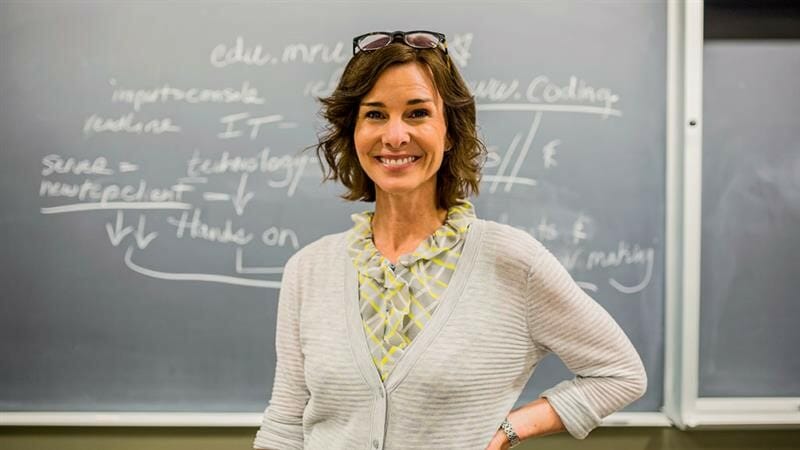I’ve often been told that there’s a difference between teaching school and university students. It’s almost as if a hierarchy exists in education, and yet the basic tenets of good teaching remain the same whether a teacher is working in a pre-school or a university.
I’ve spent more than 30 years in high schools so I feel well-versed in what makes a successful classroom experience. Interspersed through these years were numerous presentations, local and international, to teachers and parents within my community, as well as to external groups spanning primary school to university.
It’s a little simplistic to say there’s no significant difference between the various spheres of education. There are obvious differences in cognitive ability, motivation and life experience, but ultimately, the students in a class are all learners. It’s the role of the teacher to ensure the buy-in of the learner. This is what makes good teaching good at whichever level it exists.
Pedagogy and andragogy
Pedagogy is commonly defined as the art and science of teaching and is generally associated with children. In a narrow sense, the focus is on subjects and the accumulation of knowledge. Emphasis is placed on the teaching, not the process of learning.
Andragogy is more frequently associated with adult education, largely through the work of Malcolm Knowles. Rather than an accumulation of knowledge, andragogy looks to participants to solve problems. One is passive whereas the other is active, and yet good teaching is rarely passive.
If we accept these definitions, andragogy moves the learning from passive to active and, in doing so, creates an integral shift in the nature of the student-teacher relationship. Learning is now about participation and partnership, not controlling what will be learned, when it will be learned and how.
John Hattie’s research notes the importance of a positive relationship between student and teacher and the effect this has on learning outcomes. My experience suggests that regardless of the age of the student, successful learning requires a positive student-teacher relationship and an active student-centred classroom. This is further supported by recent statistics on how liking a teacher can boost a student’s results at school.
What you should expect from contemporary teaching
In line with contemporary research on the topic, we value respect, safety, relevance, engagement and feedback delivered by a passionate, knowledgeable teacher. In fact, if you think back to a significant learning situation in your own life you’d probably come up with a response that resonates with this.
You may have noted that I have deliberately not used the term ‘21st century learning’. The 21st century is already 20 years old and we should have moved on from this concept. Any learning experience needs to be a contemporary one that caters to the requirements for success in society today and for tomorrow. Predicting what’s required in the future is fraught with danger, but there is agreement around a necessary skill base.
Other elements of good teaching
There’s general acceptance that learning should involve collaboration, communication and creation. It should utilise critical thinking skills because the days of rote learning and regurgitation are gone. These attributes are based on the ability to solve problems while working with others.
To these skills I would also add choice and global citizenship. Engagement in learning is increased by a positive relationship with a teacher and by providing choice, be it choice of learning pathway, negotiated assessment or even selecting your own research area. With an increase in engagement comes deeper learning with purpose and meaning for the learner. In an increasingly globalised world, international citizenship and a broad cultural understanding is increasingly important.
The right environment for teaching
The environmental factors that impact on learning are the same for adults and younger people. What goes into the lesson is also the same. Basically, good teaching is good teaching and good teaching focuses on the learner and the learning as a process, not an end point. Learning is about creation, not consumption and regurgitation. It’s about applying knowledge and creating something, not repetition.
In Good Teaching is Good Teaching, anatomy professor A.C. Berman came up with 18 characteristics of good teaching and supported them with research spanning 1910 to 2015. Berman’s list can be compressed into five basic concepts:
- A positive relationship and classroom climate are essential
- Feedback and assess — students need to understand where they’re at
- Communicate the learning intentions and success criteria for the lesson
- Know your subject matter and how best to create an active classroom
- Engage the students — the work needs to be rich, real and relevant.
Finally, I’d like to share one of my favourite comments on teaching from NASA engineer turned high school teacher Ryan Fuller in which he laments that “teaching isn’t rocket science — it’s harder”.
And, really, he should know.
